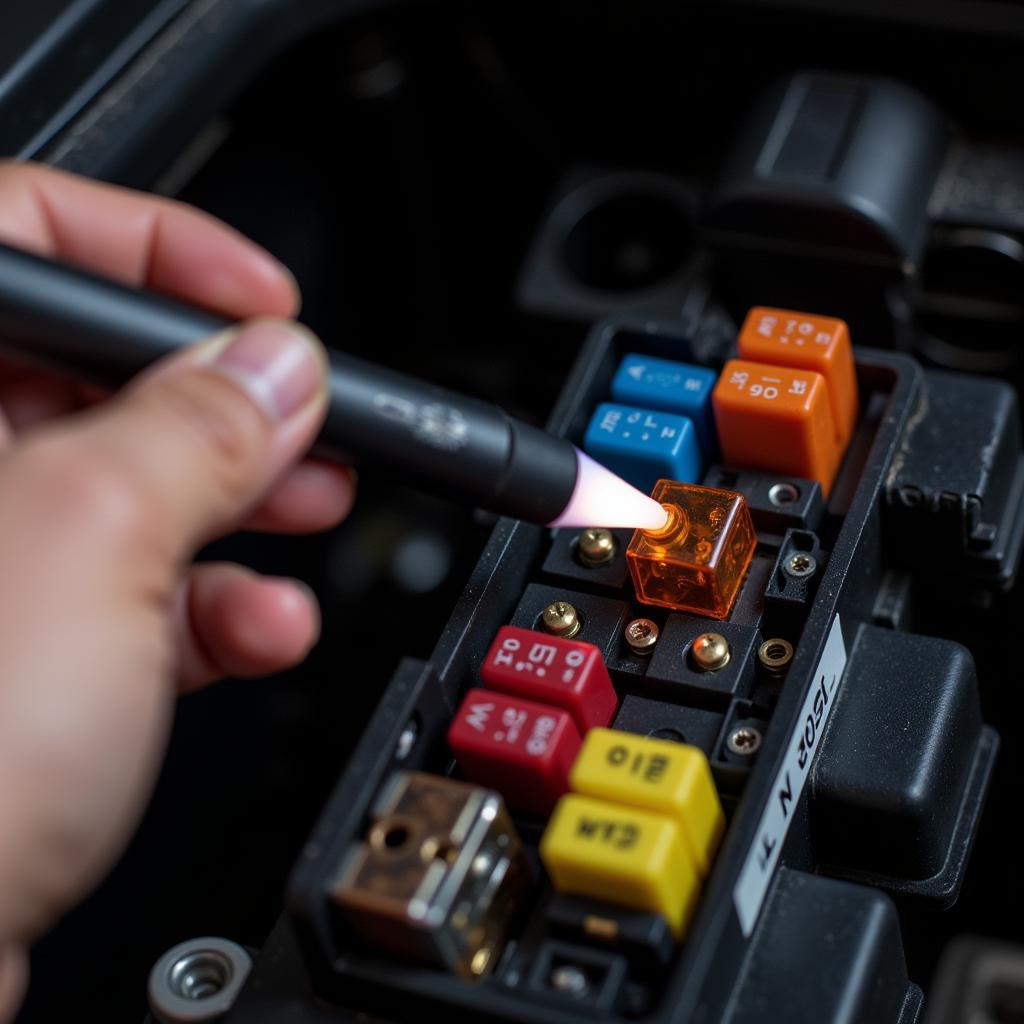A non-functioning car horn can be a safety hazard. Knowing How To Fix My Horn On My Car is a valuable skill for any driver. This guide provides a comprehensive walkthrough, from diagnosing the problem to implementing the solution, empowering you to get your horn back in working order.
Diagnosing the Horn Issue
Before you start tearing into your car’s electrical system, it’s crucial to pinpoint the root of the problem. A faulty horn can stem from several issues, ranging from a blown fuse to a damaged relay, or even a broken horn itself.
- Check the Fuse: Locate your car’s fuse box (usually under the dashboard or in the engine compartment) and consult your owner’s manual to identify the horn fuse. A blown fuse will have a broken filament. If you find a blown fuse, replace it with a new one of the same amperage.
- Test the Relay: The horn relay acts as a switch, controlling the power flow to the horn. Often located in the fuse box alongside the fuses, you can swap the horn relay with a similar one from a different function (like the headlights) to see if it resolves the issue.
- Inspect the Horn Itself: The horn is typically located behind the front grille. Disconnect the electrical connector and use a multimeter to test for continuity. No continuity suggests a faulty horn. You can also apply 12V directly to the horn’s terminals; if it doesn’t sound, it needs replacement.
 Checking the Car Horn Fuse
Checking the Car Horn Fuse
Troubleshooting the Wiring and Steering Wheel Connections
Sometimes, the problem isn’t with the horn itself but with the wiring or the connections within the steering wheel.
- Inspect the Wiring: Trace the wiring from the horn back to the steering wheel, checking for any breaks, corrosion, or loose connections. Repair any damaged wires or secure loose connections.
- Check the Steering Wheel Contact: The horn switch in the steering wheel can wear out or become misaligned. You might need to remove the steering wheel cover to access and inspect the contact. If the contact is damaged, it will need replacing.
If your car has a bad starter, check out how to fix it: how to fix your car starter.
Replacing the Horn
Replacing a car horn is a relatively straightforward process.
- Disconnect the Battery: Always disconnect the negative battery terminal before working on any electrical components.
- Locate the Horn: The horn is usually mounted behind the front grille. You may need to remove some components to access it.
- Disconnect the Wiring: Disconnect the electrical connector from the horn.
- Remove the Mounting Bolts: Unscrew the bolts securing the horn to the vehicle.
- Install the New Horn: Mount the new horn in place and reconnect the wiring.
- Reconnect the Battery: Reconnect the negative battery terminal.
- Test the Horn: Ensure the new horn is working correctly.
“A common mistake is forgetting to disconnect the battery before working on the horn,” advises automotive expert, Michael Stevenson. “This can lead to short circuits and damage to the electrical system.”
Need help with a bad car starter? Here’s a guide: how to fix a bad car starter.
Conclusion
Fixing a car horn can often be accomplished with some basic tools and a little troubleshooting. However, if you’re uncomfortable working with electrical systems, it’s always best to consult a qualified mechanic. Remembering how to fix my horn on my car can be essential for safety and peace of mind.
For any assistance or further questions, feel free to contact us at AutoTipPro. Our team of experts is here to help!
Phone: +1 (641) 206-8880
Office: 500 N St Mary’s St, San Antonio, TX 78205, United States
Is your starter acting up? See our guide on how to fix a bad starter in a car.




Leave a Reply